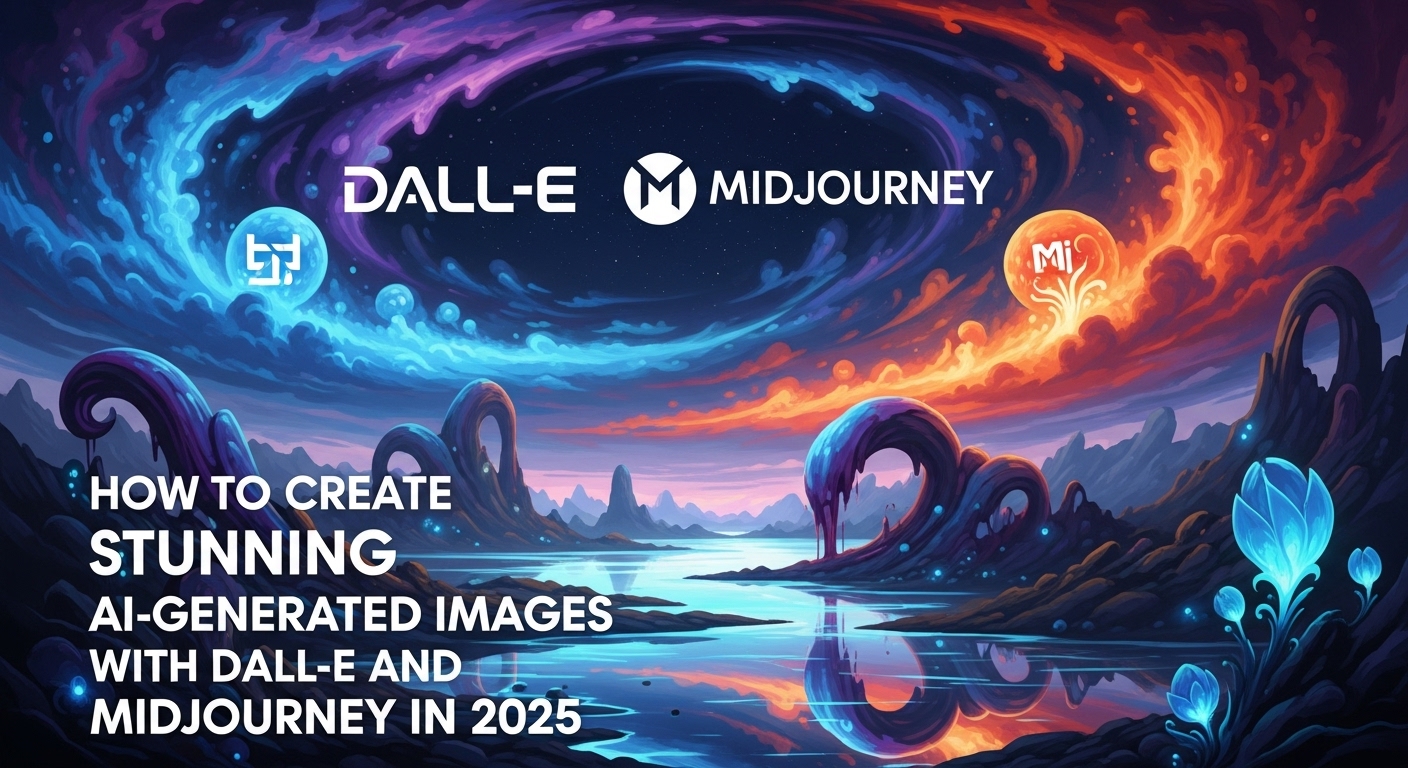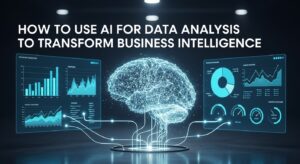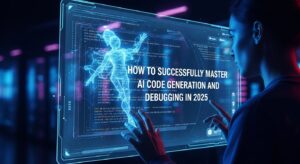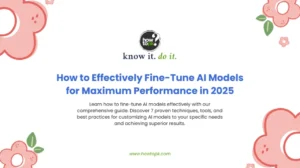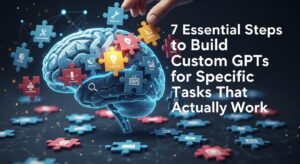Creating AI-generated images has revolutionized digital art and content creation, making professional-quality visuals accessible to everyone. Whether you’re a complete beginner wondering where to start or someone looking to refine your skills, this comprehensive guide will walk you through mastering both DALL-E and Midjourney—the two most powerful AI image generation platforms available today.
What specific aspect of AI art interests you most: the technical process, creative applications, or perhaps the business potential? Understanding your goals will help you focus on the most relevant techniques as we explore these platforms together.
Understanding AI Image Generation: The Foundation
Before diving into platform-specific tutorials, let’s establish what makes AI generated images so remarkable. These systems use diffusion models trained on millions of images to understand the relationship between text descriptions and visual elements.
Think of it this way: if you’ve ever tried to describe a dream to someone, you know how challenging it can be to translate abstract concepts into words. AI image generators work in reverse—they take your words and translate them back into visual reality.
Key Principles of Effective AI Image Creation
The success of your AI-generated images depends on three fundamental elements:
- Prompt Engineering: The art of crafting descriptive text inputs
- Parameter Control: Understanding how to adjust settings for desired outcomes
- Iterative Refinement: Using feedback loops to improve results
What’s your current experience with describing visual concepts? Have you noticed how some descriptions create vivid mental images while others fall flat?
DALL-E: Your Gateway to AI-Generated Images
OpenAI’s DALL-E represents one of the most user-friendly entry points into AI-generated images. Its intuitive interface makes it perfect for beginners while offering enough sophistication for advanced users.
Getting Started with DALL-E
- Step 1: Account Setup Visit OpenAI’s platform and create your account. New users typically receive free credits to experiment with AI art.
- Step 2: Understanding the Interface The DALL-E interface centers around a simple text box, but don’t let this simplicity fool you. The real power lies in how you craft your prompts.
Crafting Effective DALL-E Prompts for AI-Generated Images
Consider this progression of prompts and think about which would produce more compelling results:
- Basic: “A cat”
- Better: “A fluffy orange tabby cat sitting on a windowsill”
- Advanced: “A photorealistic fluffy orange tabby cat with green eyes sitting on a wooden windowsill, golden hour lighting, shallow depth of field, professional photography style”
What elements do you notice being added as the prompts become more sophisticated?
DALL-E Advanced Techniques
Feature | Description | Best Use Cases |
Inpainting | Edit specific parts of existing images | Product variations, scene modifications |
Outpainting | Extend images beyond original borders | Creating panoramas, expanding compositions |
Variations | Generate multiple versions of an image | Exploring creative alternatives |
Style Transfer | Apply artistic styles to existing content | Brand consistency, artistic projects |
Pro Tip for DALL-E Generated Images: Use specific art movement references like “in the style of impressionist paintings” or “cyberpunk aesthetic” to achieve consistent visual themes.
Mastering Midjourney for Professional AI-Generated Images
Midjourney operates through Discord, creating a unique community-driven experience for AI generated art. This platform excels at producing artistic, stylized visuals that often surpass photorealistic attempts.
Setting Up Your Midjourney Workspace
Step 1: Join the Discord Server Access Midjourney through their official Discord server. This community aspect provides valuable learning opportunities as you observe other creators’ AI-generated images and techniques.
Step 2: Understanding Commands Midjourney uses specific commands to create images:
/imagine– Primary creation command/blend– Combine multiple images/describe– Analyze existing images for prompt inspiration
Advanced Midjourney Prompt Structure for AI-Generated Images
The most effective Midjourney prompts for generating images follow this structure:
[Subject] + [Style/Medium] + [Composition] + [Lighting] + [Parameters]
Example:
/imagine ethereal forest spirit, watercolor painting style, close-up portrait, soft diffused lighting, --ar 16:9 --stylize 750 --quality 2
Midjourney Parameters That Transform AI-Generated Images
Understanding parameters gives you precise control over your AI-generated images:
--aspect ratio (--ar): Controls image dimensions--stylize (--s): Adjusts artistic interpretation (0-1000)--quality (--q): Affects rendering detail and cost--chaos (--c): Introduces creative unpredictability--seed: Ensures reproducible results
Advanced Parameter Combinations:
- High-quality portraits:
--ar 3:4 --q 2 --s 250 - Creative exploration:
--ar 1:1 --s 750 --c 50 - Commercial use:
--ar 16:9 --q 2 --s 100
Comparative Analysis: DALL-E vs. Midjourney for AI-Generated Images
Aspect | DALL-E | Midjourney |
Ease of Use | Extremely user-friendly web interface | Requires Discord familiarity |
Image Style | More photorealistic and literal | Highly artistic and interpretive |
Prompt Sensitivity | Responds well to detailed descriptions | Excels with artistic and emotional language |
Community | Individual-focused platform | Strong collaborative community |
Pricing | Credit-based system | Subscription tiers |
Commercial Usage | Clear licensing terms | Specific commercial licensing |
Which platform appeals more to your creative goals? Are you drawn to precision and realism, or do you prefer artistic interpretation and community collaboration?
Advanced Techniques for Both Platforms
Prompt Engineering Mastery for AI-Generated Images
The Layered Approach: Start with basic elements and systematically add complexity:
- Core Subject: What is the main focus?
- Environmental Context: Where does this exist?
- Artistic Style: How should it be rendered?
- Technical Specifications: What camera/artistic technique?
- Emotional Tone: What feeling should it convey?
Example Evolution:
- Layer 1: “Mountain landscape”
- Layer 2: “Mountain landscape at sunrise”
- Layer 3: “Majestic mountain landscape at sunrise, impressionist style”
- Layer 4: “Majestic mountain landscape at sunrise, impressionist style, painted with bold brushstrokes”
- Layer 5: “Majestic mountain landscape at sunrise, impressionist style, painted with bold brushstrokes, conveying peace and solitude”
Negative Prompting for Better AI-Generated Images
Both platforms benefit from negative prompts—telling the AI what to avoid:
DALL-E Approach: “Create a portrait of a woman, avoid cartoonish features, no exaggerated proportions”
Midjourney Approach:
/imagine portrait of a woman --no cartoon, exaggerated, anime
Troubleshooting Common AI-Generated Images Issues
Problem-Solution Framework
Issue: Blurry or low-quality images
Solutions:
- Increase quality parameters
- Use more specific descriptive language
- Avoid conflicting style descriptions
Issue: Results don’t match your vision
Solutions:
- Break complex concepts into simpler components
- Use reference style terminology
- Experiment with different prompt structures
Issue: Inconsistent results across generations
Solutions:
- Use seed values for reproducibility (Midjourney)
- Save successful prompt formulas
- Document parameter combinations that work
Business Applications and Commercial Use of AI-Generated Images
Content Marketing Revolution
AI-generated images are transforming content marketing by enabling:
- Rapid prototype development
- Brand-consistent visual content
- Cost-effective illustration solutions
- Personalized marketing materials
Legal Considerations for AI-Generated Images
Before using AI-generated images commercially, consider:
- Platform-specific licensing terms
- Copyright implications
- Attribution requirements
- Commercial usage restrictions
Review the legal guidelines from Stanford’s AI Lab for comprehensive information about AI-generated content rights.
Future Trends in AI-Generated Images
Emerging Technologies
The landscape of AI-generated imagery continues evolving with:
- Real-time generation capabilities
- Video generation integration
- 3D model creation
- Enhanced photorealism
Integration Possibilities
Modern AI-generated images are increasingly integrated with:
- E-commerce platforms
- Social media tools
- Design software
- Marketing automation systems
Best Practices for Consistent AI-Generated Images Success
Workflow Optimization
- Research Phase: Study successful AI-generated images in your desired style
- Experimentation: Test prompt variations systematically
- Documentation: Record successful combinations
- Refinement: Iterate based on results
- Application: Apply learnings to new projects
Quality Control Checklist
Before finalizing your AI-generated images:
- [ ] Does it match your intended message?
- [ ] Is the technical quality sufficient for your use case?
- [ ] Are there any unwanted artifacts or errors?
- [ ] Does it align with your brand guidelines?
- [ ] Have you verified commercial usage rights?
Community Resources and Continued Learning
Recommended Learning Platforms
- Midjourney Community Showcase
- OpenAI’s DALL-E Research Papers
- Reddit AI Art Communities
- YouTube AI Art Tutorials
Advanced Training Resources
- Coursera’s AI Art Courses
- Udemy’s Creative AI Programs
- Professional workshops and bootcamps
Conclusion: Your Journey with AI-Generated Images
Creating compelling AI art combines technical understanding with creative vision. Whether you choose DALL-E’s precision or Midjourney’s artistic flair, success comes from systematic experimentation and continuous learning.
The key to mastering AI image generation lies not just in understanding the tools, but in developing your unique creative voice through them. As you progress, you’ll discover that the most powerful prompt is often not the most complex one, but the one that most clearly communicates your creative intent.

